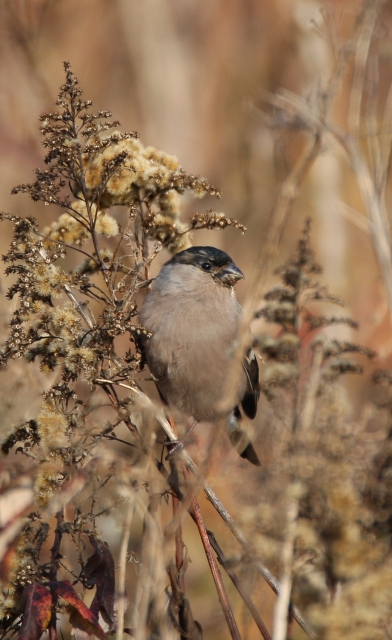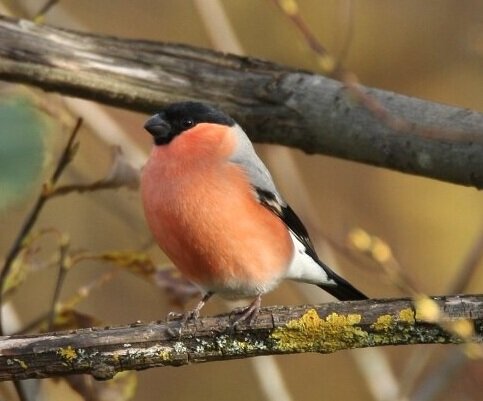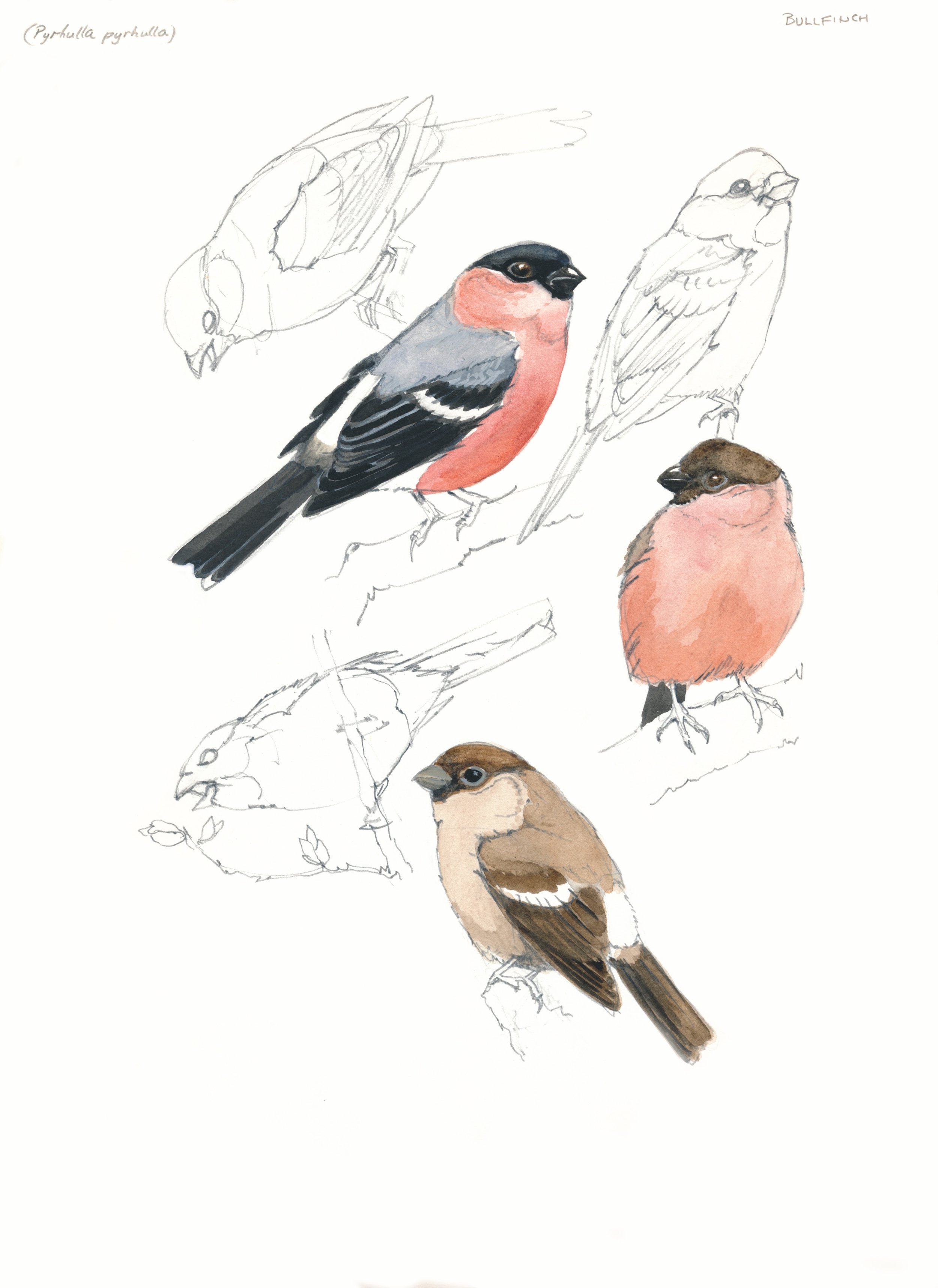BULLFINCH (Pyrrhula pyrrhula) - Bouvreuil pivoine
© Frank Jarvis
SUMMARY
The male Bullfinch is beautiful bird with pink breast and black cap. Rather shy it is usually seen high in the treetops where it sings a quiet and rather mournful song:
Bullfinch female © Arlette Berlie
This attractive but rather shy and quiet finch specialises in eating flower buds which makes it rather unpopular with fruit farmers. Nonetheless in Switzerland it seems to be more common between 1000 - 1400m which is well out of the altitude range of orchards. In habits it always strikes me as being rather quiet and unassuming, favouring high tree tops or dense vegetation. It does not form large flocks like other finches, although in winter 6-10 individuals can be seen together, more frequently it is pairs which are seen and a recent long-term study by Olav Hogstad in Norway has confirmed that they form permanent pair-bonds which span over years.
The two are easily identified, both have a rather large head on a stocky body, with a black cap and white rump, but the male has a nice rosy-pink breast, brighter in spring (maybe accounting for the French vernacular name since pivoine = peony) whilst the female is pale brown above and below.
The Bullfinch is not a noisy bird and most of its calls seem to be intended for close range contact rather than a raucous defense of territory or declaration of readiness to mate. Indeed they are not strongly territorial and the song most likely serves to keep the pair-bond strong. The most frequently heard sound is a gentle and rather plaintive whistled "pui":
(That last recording was made in January, there was snow falling off the trees and a Great Spotted Woodpecker tapping nearby.)
As I say this is not a loud announcement like many calls of other species. Like most calls that humans describe as "plaintive" or "sad" this single note has a slight downwards inflection:
Although a very gentle note (this recording was made within 10m of the bird) the sound can carry a surprisingly long way through the forest.
Birds which become separated from their mates or flock can add variations, this one was calling a double-note which sounded a bit more anxious:
Here are two recordings of further variations, the first bird extended the single note into two notes at different pitches, and the second is a different bird but starts with the same double-pitched call but later adds a third and fourth note:
The additional notes used by the the second bird above have a different shape from the single "pui" call and seem to be more directive - really quite musical - approaching a sort of short song:
Bullfinch male © Arlette Berlie
So this finally leads us to what passes as a "song" for a this bird - uttered by both male and female it is a series of very gentle squeaks, trills and rather discordant creaking and sucking noises that sound almost mechanical. I have only ever heard it sung in close proximity to a mate, and this recording was made within 10m of the bird - so quietly delivered it is almost inaudible outside this distance:
Seen in a sonogram some of these nosies are so faint they barely register. The sound has been aptly described by some authors as rather like the creaking noise made by the dry hinge of an old door !
Bullfinch song
© Arlette Berlie
There is a race of bullfinch from the north of Europe (Russia and Siberia) which in winter can move further south and west into central and southern Europe. This is identified by its call which sounds very much like a plastic toy trumpet a child might have - thus these have become known as "trumpeting" Bullfinches. For the last 10 years or so birdwatchers in Switzerland have reported these trumpeting Bullfinches in winter - but I confess that although I have listened hard and made quite a few recordings I have not satisfied myself that I have come across one of these, and given the call variations I have found I wonder if all the records of that call are accurate. For reference purposes here is what a trumpeting Bullfinch sounds like, recorded in Italy but not by me:
Bullfinch studies, male female and juvenile male © Frank Jarvis







